As many jewellery publications will attest, pearls are having a huge moment among consumers. Their popularity has risen in part due to star power – celebrities seen wearing pearls and setting trends – but there are many other factors at play driving the beads of nacre as a force to be reckoned with. Here we spoke to five big name brands in the Australian pearl industry to find out what these factors are, as well as how pearls are being worn, and what makes them so attractive to consumers.
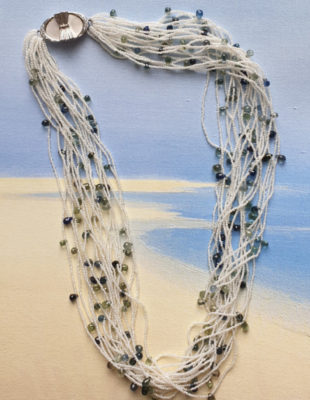
1/7 Devino
The Cultured Pearl Association of America and MVI Marketing recently conducted a study to find out how consumers respond to pearls and pearl jewellery. The study was titled, “The Benchmark Study of Consumer Preferences for Pearls” and in it, 1012 US jewellery consumers who bought at least US $200 of fine jewellery in the past three years were surveyed. Their findings showed that pearls are already a consumer favourite, with most consumers (66 percent of respondents) indicating they at least own one pearl jewel and of those, 69 percent of them own a strand and 62 percent own pearl earrings.
When probed on these findings Creative Director of Linneys, Justin Linney, said that he believed pearls are an essential part of every woman’s wardrobe. “The study results are fantastic and show the demand for pearls is still strong,” he said.
“Pearls are part of our history in Australia, they are an iconic gem and for this reason my expectation is that demand will remain strong in Australia for years to come.”
Managing Director of Pacific Pearl Pty Ltd, William He, took a wholistic view in regards to the study’s findings. “In terms of cultural heritage, the traditional British culture has always influenced Australia,” he said. “It is often said that look at the women of the British royal family: there is no one who does not wear pearl jewellery.”
He also said in the past 20 years, their pearl jewellery sales have rapidly increased, especially between 2000 and 2013. “Pearl earrings and necklaces are the main pearl jewellery pieces we sell.”
Rudi Zingg is Pearl Master at Devino, a well-known and respected pearl wholesaler, and he said that pearls have been popular for a long time, but new designs and styles have made pearls more relatable to modern lifestyles and a contemporary choice for every day.
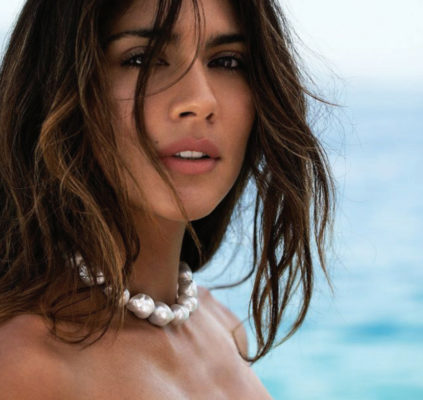
2/7 Paspaley
What pearl pieces are popular
As shown above in the study results, pearl strands and earrings will always remain the most popular among pearl jewellery, so we sought to discover what other types of pearl jewellery consumers are driven to.
Executive Director of Paspaley, Peter Bracher, said necklaces featuring pearls with additional design elements are very popular at the moment. “For example, strands with multiple pearl shapes or colours, long necklaces featuring pearls and designed motifs in precious metals or stones and, particularly, long necklaces and strands that can be worn in a variety of ways,” he said.
Vina by Pinaroo is a major Australian brand specialising in sterling silver jewellery set with cubic zirconia, pearl, turquoise and other semi-precious stones. Founder and managing director Vina Lambert said that pearl rings, pendants, and bracelets have always remained popular.
Rudi said that at Devino, unique shapes and colours are very popular. “We are selling a lot of multi-colour strands and baroque-shaped pearls,” he said.
“Long necklaces from 70-100cm are (also) very popular.” At Pacific Pearl, William said that the proportion of overall sales for pearl pendants are relatively high compared to necklaces and earrings. Justin said that pearl pendants on fine chains are very popular at the moment, closely followed by pearl rings.
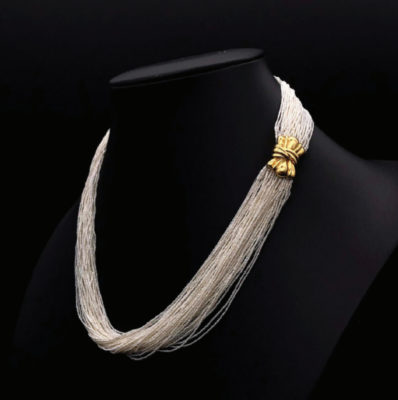
3/7 Devino
Millennials’ budding penchant for pearls
The study also showed that consumers aged between 25 and 35 also think pearls are an ideal gem to give, buy or receive for themselves.
Peter said that in recent years, there has been a move towards luxury goods that allow greater expression of individuality, and that pearls allow just that, which is ideal for the highly expressive younger market. “The enormous variety of shapes, sizes and colour of South Sea pearls are perfectly suited to creative jewellery design that allows each piece to express the individuality of the wearer rather than being identical to another piece of jewellery,” he said.
At Devino, Rudi said his team have seen pearls everywhere from costume jewellery, freshwater pearls, Akoya, Tahitian, and South Sea pearls. “There is something for all budgets, any occasion and every age,” he said. For William, millennials’ attraction to pearls rings true, because from his point of view, women only gradually become interested in pearls and pearl jewellery from age 30. He said women aged between 25 and 30 are more interested in other types of consumer products.
“Even if someone occasionally has an interest in pearl jewellery, they are more willing to try artificial ones to experience it and have the opinions from family or friends instead of real pearls,” he said. He also described imbuing a love for pearls in younger people is a challenging issue.
Justin also drew attention to the popularity of imitation pearls as a way to appeal to the younger market and potentially lead them to genuine pearl purchases. “Imitation pearls are being used in fashion for embellishment and this flows through to costume jewellery,” he said.
“The younger demographic are exposed heavily to this imitation pearl costume jewellery, creating more demand for real pearls as well, so it can be assumed that there is a percentage of these pearl admirers who will then decide to purchase real pearls in fine jewellery.” Vina said pearl jewellery has been showing up on Instagram feeds, especially freshwater varieties which she said have become a favourite among trendsetters and influencers to create fresh fashion-forward style.
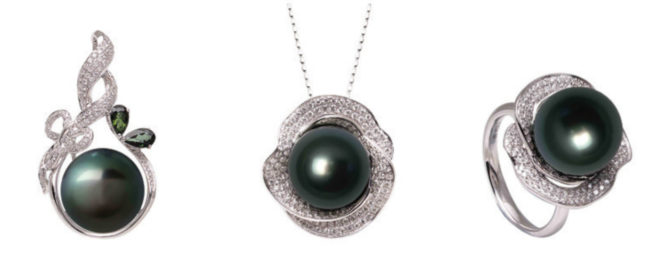
4/7 Pacific Pearls
Pearls on men, pearl engagement rings and other pearl oddities
Both celebrities and younger consumers are also the ones driving new trends in pearls such as pearls on men (Pharrell Williams, Harry Styles) and pearl engagement rings (Emma Stone, Ariana Grande). Rudi concedes that it’s hard to compete with the traditional diamond engagement ring, but has noticed an increase in male celebrities wearing pearl necklaces and used on a number of catwalks, showing how versatile pearls can be.
At Paspaley, Peter has heard anecdotal reports of increases in pearl engagement ring, but nothing significant. “I think the diamond engagement ring is here to stay but I wouldn’t be surprised if pearls make up a larger proportion of that market in the years to come,” he said. However, he said the increase in the number of men wearing pearls was dramatic.
“What took me by surprise is that it is not just a single pearl pendant that has become popular but strands and, sometimes, many strands worn together.” Vina said pearls would make an elegant and unique choice for and engagement ring, and also more affordable than diamonds. Justin has also noticed more men wearing pearls, and with Linneys black pearl neoprene bracelet, it makes it even easier for men.
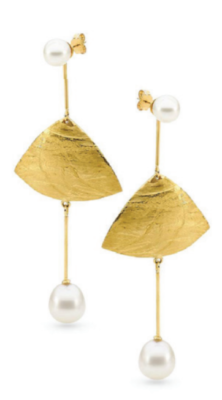
5/7 Linneys
The modern appeal of the pearl
As reported in a feature article in The Sydney Morning Herald, stylist Mattie Cronan from Women’s Weekly said that pearls are in fashion now, but actually timeless, and that’s the light that comes off them, their organic shapes and their one-of-a-kind nature which makes them so attractive to women. All our contributors agreed and added their own reasons for pearls’ popularity.
For William, it’s the variety and tone of the colours produced during their natural growth cycle. “The peacock tone in Tahitian black pearls, the light pink and light orange colours in freshwater pearls, and the silver grey in South Sea pearls, are highly sought after by consumers,” he said. “Economically the pearl price is relatively moderate, which makes it easier to make pearl jewellery the first choice for dressing up or giving away to relatives and friends.”
At Linneys, Justin said consumers appreciate them because they are not cut or polished like all other gems, making them especially naturally beautiful “Linneys customers also like having Australian South Sea pearls due to the fact that they are Australian grown, and are being set in jewellery handcrafted in our design studio in Western Australia using Australian gold,” he said. Peter said he believes that the romance in the way in which pearls are found and produced, and the mystique and beauty of pearls as physical objects are two fundamental sides to their appeal.
“Natural pearls appear almost miraculously inside a living organism at the bottom of pristine oceans,” he said.
“With cultured pearls, some of the chance is removed from the process but, at least for Australian South Sea pearls, the romantic aspect of divers seeking treasure from the ocean remains.” He said their appeal as physical objects is partly related to their formation inside living creatures rather than being cut or manufactured into precise forms like other materials.
“Although different pearls may have many similarities, each one also has unique characteristics that give them a personality. I believe this individuality is one of the things that makes them so captivating.” Lustre is the most captivating aspect of pearls for Rudi, who added that lustre can make any pearl stand out.
“It is important to always choose pearls with the best lustre,” he said. “Other factors such as colour, shape and size are down to personal choice – some colours will suit certain skin tones better than others and some people will want perfect round shapes while others prefer the irregular baroque shapes.” Vina said that pearls symbolise luxury and elegance.

6/7 Pinaroo
A lustrous future ahead
As for what the future holds for Australia’s pearl industry, while he admits he’s reluctant to try make forecasts or predictions, Peter said three factors bode well for the popularity of pearl jewellery. These factors are human’s genetic predisposition for adornment, that concerns about social and environmental issues will grow in importance and sustainability and will become an essential cornerstone of all luxury products, and the growing tendency for people to desire things that are not electronic, synthetic or identical to those of our families and friends.
“Unlike a smart phone or handbag which is identical to many others and entirely man-made, pearls have an individual
character and an inextricable connection to nature that I believe will only become more desirable as the world continues to become more urbanised and homogenous,” he said.
William had a couple of reasons of his own to be optimistic about the future of pearls and the pearl industry: the first being that despite pearls being cultivated, they are grown and formed in the natural environment, which limits their production quantity. He said that in the past five to eight years, the local governments of several Chinese provinces have banned the cultivation of freshwater pearls, in order to reduce environmental pollution.
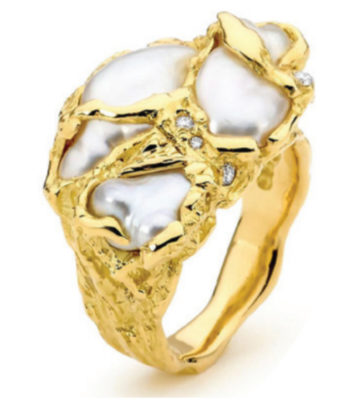
7/7 Linneys
“This caused the price of freshwater pearls to dramatically increase,” he said. His second reason is aesthetic: that when pearls are paired with precious metals or other gems, the beauty of life is prominent. Echoing similar sentiments, Rudi said that pearls are here to stay and will continue to be popular as long as we look after our environment and the oysters which produce these natural gems.
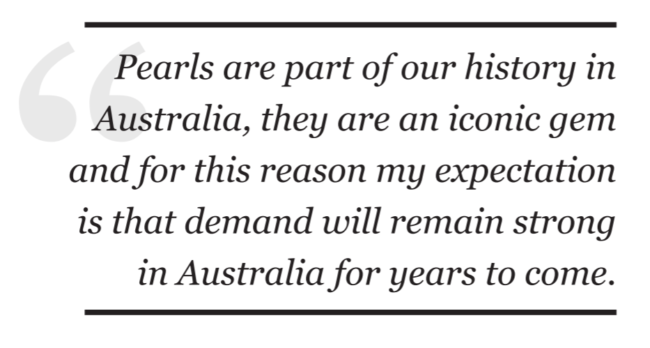
“Fashion will continue to change however pearls are so versatile that they can be adapted to the latest trends,” he said. Justin said he and his team at Linneys are excited to continue creating innovative designs featuring pearls. “Each pearl is unique and presents new design opportunities,” he said.